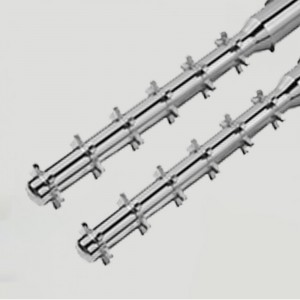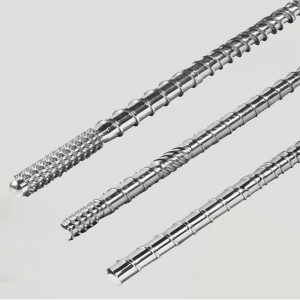Screw barrel for Blowing PP/PE/LDPE/HDPE film

Screw Design: The screw for blown film extrusion is typically designed as a "grooved feed" screw. It has deep flights and grooves along its length to facilitate good resin melting, mixing, and conveying. The flight depth and pitch may vary depending on the specific material being processed.
Barrier Mixing Section: Blown film screws commonly have a barrier mixing section near the end of the screw. This section helps to enhance the mixing of the polymer, ensuring consistent melting and distribution of additives.
High Compression Ratio: The screw usually has a high compression ratio to improve melt homogeneity and provide uniform viscosity. This is important for achieving good bubble stability and film quality.
Barrel Construction: The barrel is typically made of high-quality alloy steel with proper heat treatment for excellent wear resistance and durability. Nitriding or bimetallic barrels can also be used to enhance wear resistance for extended service life.
Cooling System: Screw barrels for blown film extrusion often feature a cooling system to regulate the temperature and prevent overheating during the extrusion process.
Optional Features: Depending on specific requirements, additional features like a melt pressure transducer or a melt temperature sensor can be incorporated into the screw barrel to provide monitoring and control capabilities.



It's important to consult with a reputable screw barrel manufacturer or supplier to ensure you get the appropriate screw barrel design for your blowing PP/PE/LDPE/HDPE film application. They can provide expert advice based on your specific production needs, material properties, and expected output requirements.











